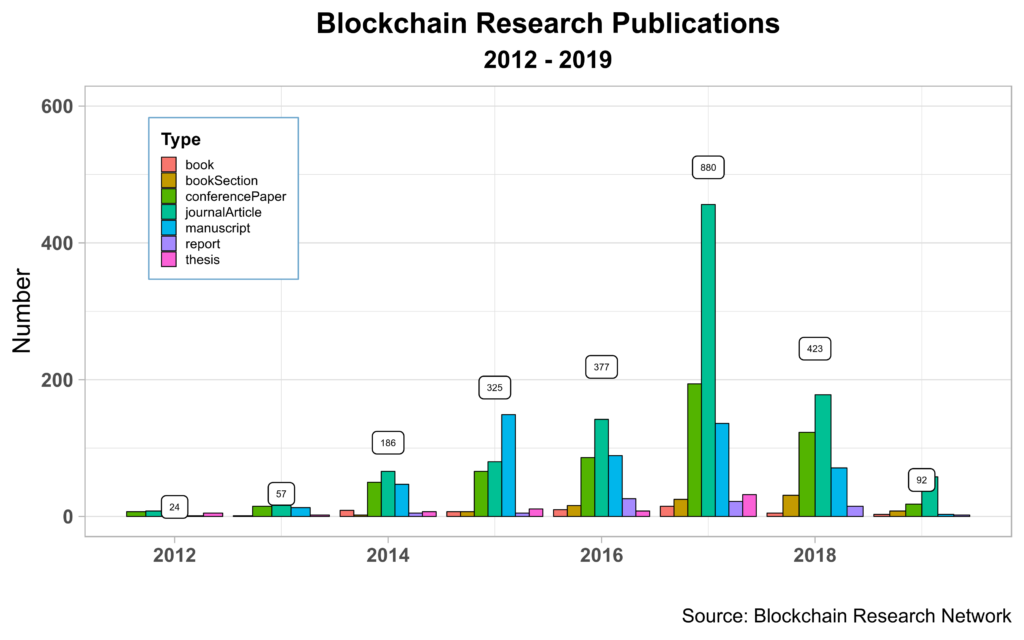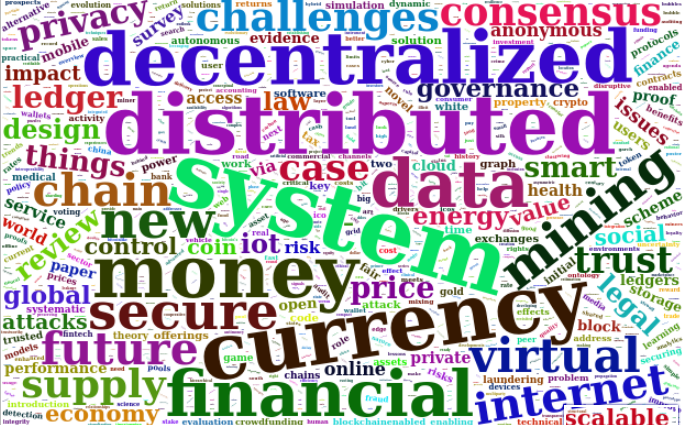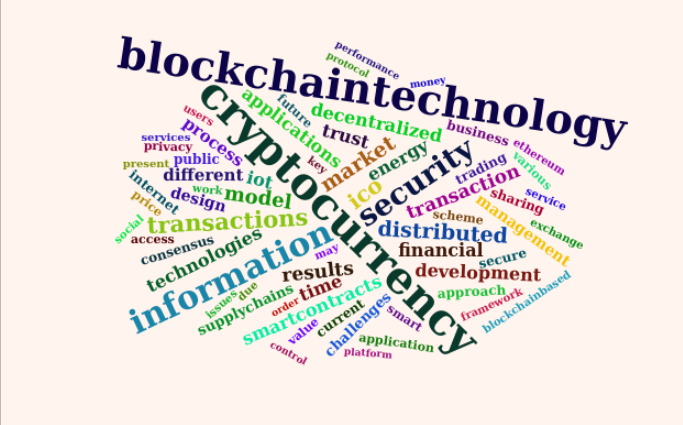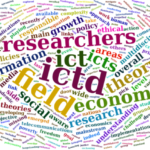Blockchain technology development has been accompanied by a substantial increase in related research. The latter usually trails new technology innovations, but it does tend to catch up in the short-term. Ten years after the emergence of blockchains, there is plenty of ongoing academic and other research. Keeping track of its volume requires some sort of collaborative effort among different actors. Enter the Blockchain Research Network, BRN.
Created last Summer, BRN is an independent network open to all researchers regardless of affiliation. Furthermore, BRN is not linked to any academic institution or business organization, nor does it plan to be. It is thus decentralized, working ins the same fashion as traditional Open Source networks. To date, BRN has over 400 registered members who can contribute in different ways. Joint efforts of network members have resulted in creating a research bibliography database (not a ledger!), which includes a broad set of documents, including white papers and grey literature.
To date, the database comprises 2,484 bibliographic entries. In this post, I will examine a few features of the database. Before drawing any hard conclusions, note that while the data captured by BRN is random (or at least pseudo-random), it is harder to assert that the sample is fully representative of all the research that is out there. A sample error should be quantified to detect trends with a certain degree of statistical confidence and significance. But the sheer sample size of BRN’s database is impressive and does provide fertile ground for an initial analysis.
The figure below depicts the distribution of the BRN database entries by both year and type of publication. To simplify the presentation, I have excluded entries from websites, videos, blogs and other online sources, reducing the total number of records to 2,390.
 Notably, and just like Bitcoin and other cryptocurrencies, research captured by BRN peaks in 2017 with a total of 880 records. Almost 37% of all research stored in the database took place that year. Second, a decline of 48% occurs in 2018, which, in any event, was not as steep as that experienced by cryptocurrency market prices in that same year. However, I am not sure why such a step decrease in research happened. Third, blockchains research started to take off in 2014, with journal articles, conference papers, and manuscripts leading the way. By 2016, academic papers took the top spot and have stayed there since. Finally, 2019 is apparently growing at the same pace as 2018, suggesting that blockchain academic research might be approaching a more stable phase.
Notably, and just like Bitcoin and other cryptocurrencies, research captured by BRN peaks in 2017 with a total of 880 records. Almost 37% of all research stored in the database took place that year. Second, a decline of 48% occurs in 2018, which, in any event, was not as steep as that experienced by cryptocurrency market prices in that same year. However, I am not sure why such a step decrease in research happened. Third, blockchains research started to take off in 2014, with journal articles, conference papers, and manuscripts leading the way. By 2016, academic papers took the top spot and have stayed there since. Finally, 2019 is apparently growing at the same pace as 2018, suggesting that blockchain academic research might be approaching a more stable phase.
Examining the titles of all database publications since 2012 also shows some interesting patterns. While research on blockchains was still relatively insignificant in 2012 and 2013, the analysis indicates that by 2014 Bitcoin was the main magnet attracting the attention of academics, practitioners, and pundits, as seen in the word cloud diagram below.
In fact, the word blockchain only appears found twice in the titles of the publications captured by BRN for that year. Not surprisingly, words such as currency, cryptocurrency, money, and digital also make frequent appearances in the title field.
By 2016, the tide started to change as blockchains rapidly rose in the title ranks and almost tied Bitcoin for the lead, as seen below.
Words such as decentralized, distributed, and smart contracts, among several others, also gained prominence and started to compete with words usually associated with Bitcoin at the time. In turn, the latter did not really lose ground in absolute terms thanks to an increase of almost 100% in the number of total publications recorded. Most probably, the emergence of Ethereum in 2015 helped propel this evolution as the new platform opened the door to explore digital ledger applications other than cryptocurrencies using blockchains as the core technology.
By the end of 2017, the Bitcoin-blockchain battle had already been decided in favor of the latter, as seen in the chart below.
Not that Bitcoin was erased from the agenda of researchers; not at all. But the trend changed for good as the same results can be seen for both 2018 and 2019. Interestingly, while 2017 and 2018 were the prime years for ICOs, only two publications, out of over 1,300, mention this word in their titles. But this can be a case of the research lag mentioned at the beginning of this post.
So what has been going on since the end of 2017? Looking at the abstracts that accompany most publications can yield a more nuanced view of recent trends. The figure below provides a word cloud for 2018-2019 documents in the BRN database. I have excluded both blockchain(s) and Bitcoin as they are still far ahead of the rest – for example, blockchain(s) appear over 850 times in less than five hundred publications compiles for the period in question.
Three layers can be identified intuitively. The first one and most apparent recalls the dichotomy between blockchain and Bitcoin. Blockchain technology as a unique concept emerged in the literature while cryptocurrencies became the generic term to refer to crypto money. The second layer includes a mix of themes and blockchain applications. Here we find research on security, ICOs, distributed systems and markets, among others. So the ICO research lag is now being closed when ICOs are trying to make a come back. The last layer includes research on smart contracts, financial applications, energy, IoT, trust, decentralization and supply chains. Themes like privacy, identity, and governance show up but have relatively less importance in the overall research horizon.
As mentioned above, this overall analysis has definitive limitations, one being the sample used to create various graphs and charts. Undoubtedly, more sophisticated text analytics could be used to poke more in-depth into the data source we have at hand. Do not be afraid to plunge into it – or contribute by adding more resources to the BRN bibliographic database.
Cheers, Raúl










